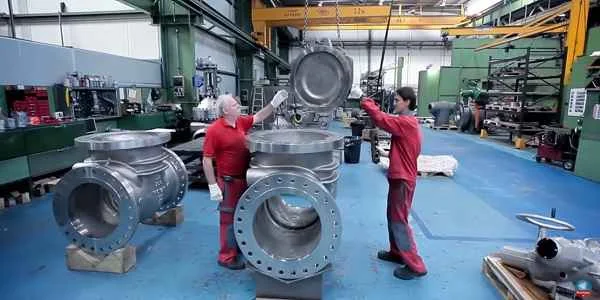Valves are used to control the flow of various types of fluids such as air, water, steam, various corrosive media, sludge, oil, molten metals and radioactive media.
There are many varieties of valves, both in shape and size, that are used in oil and gas and industry, so the first thing that is important to know is the classification of valves based on several criteria as described below.
Classification of Valves for Oil and Gas and Industry
A. Based on the way of work
- Automatic value, namely a valve that works alone depending on the ability of its own media. For example check valves, safety valves, control valves, steam trap valves and pressure reducer valves.
- Actuating valves are valves that are operated manually, electrically, hydraulically or pneumatically. Examples are gate valves, globe valves, throttle valves, butterfly valves, ball valves and plug valves.
- Shape of cut: cover piece moves along the center of the valve seat.
- Gate shape: closing member moves along the center of the vertical valve seat.
- Cock and ball: the closing part is the plunger or ball that rotates around its center line.
- Swing form: the cover portion rotates around an axle outside the valve seat.
- Disc shape: the cover portion rotates around an axle in the valve seat.
- Spool shape: the closing portion slides in a direction perpendicular to the channel.
- Braking: used to turn on or turn off the pipe media. For example globe valves, gate valves, ball valves and butterfly valves.
- Non-return: used to prevent backflow of media. For example check valves.
- Adjustment: used to adjust the media pressure and flow. for example control valve and pressure reducer valve.
- Distribution: used to change the direction of media flow. For example 3 way chicken valve, distribution valve and spool valve.
- Safety: when the pressure is exceeding the specified value, the valve will release excess media to ensure the safety of the piping system and equipment. For example safety valve and accident valve.
- Other special uses such as steam trap valve, ventilation valve and drain valve.
- Manual: driven by human power with the help of a handwheel, handle, lever or sprocket.
- Electric: driven by a motor or other electrical device.
- Hydraulic: driven by the hydraulic system (oil).
- Pneumatic: driven by a pneumatic system (wind).
- Valve vacuum: absolute pressure < 0.1 Mpa or 760 mmHg, usually expressed in a water column of mm Hg or mm.
- Low pressure valves, namely valves with nominal pressure (PN) < 1.6 Mpa (including steel valves with PN < 1.6 Mpa)
- Medium pressure valves are valves with a nominal pressure of PN 2.5 - 6.4 Mpa
- High pressure valves are valves with a nominal pressure of PN 10 - 80 MPa.
- The ultra high pressure valve is a valve with a nominal pressure of 100 MPa PN.
- Small diameter valve, DN < 40 mm
- Medium diameter valve, DN 50 - 300 mm
- Large diameter valve, DN 350 - 1200 mm
- Extra large diameter valve, DN >1400 mm
- Valve flanges connection, the valve body has flanges for connection to pipe flanges.
- Threaded valve, the valve body has an internal or external thread and is threaded according to the pipe thread.
- Welded joint valve, the valve body has a welded connection with the pipe.
- Clamp connection valves, namely valves with clamps on the valve body and clamps connected to the pipe.
Loading posts


